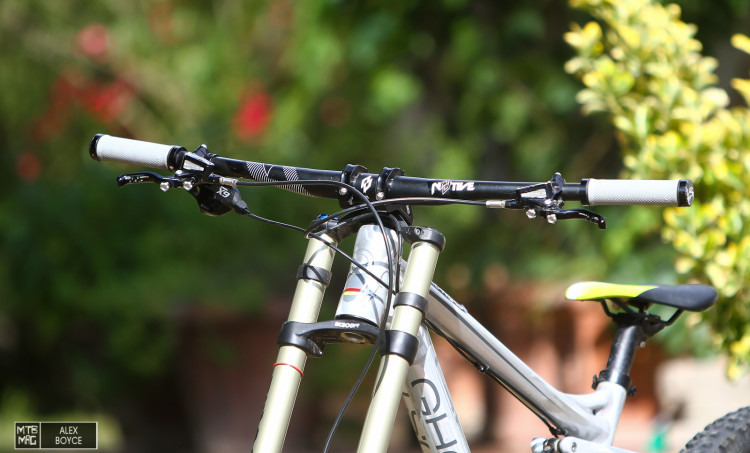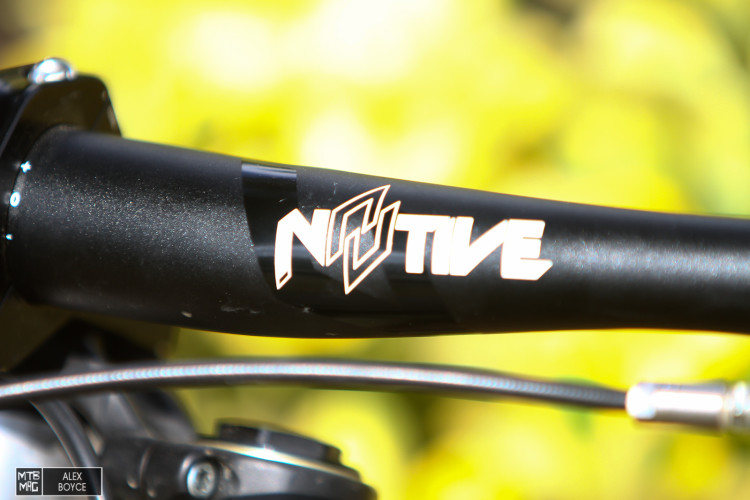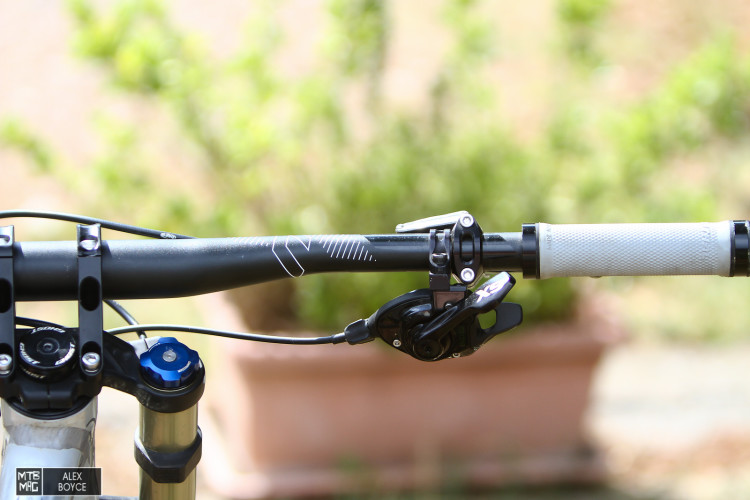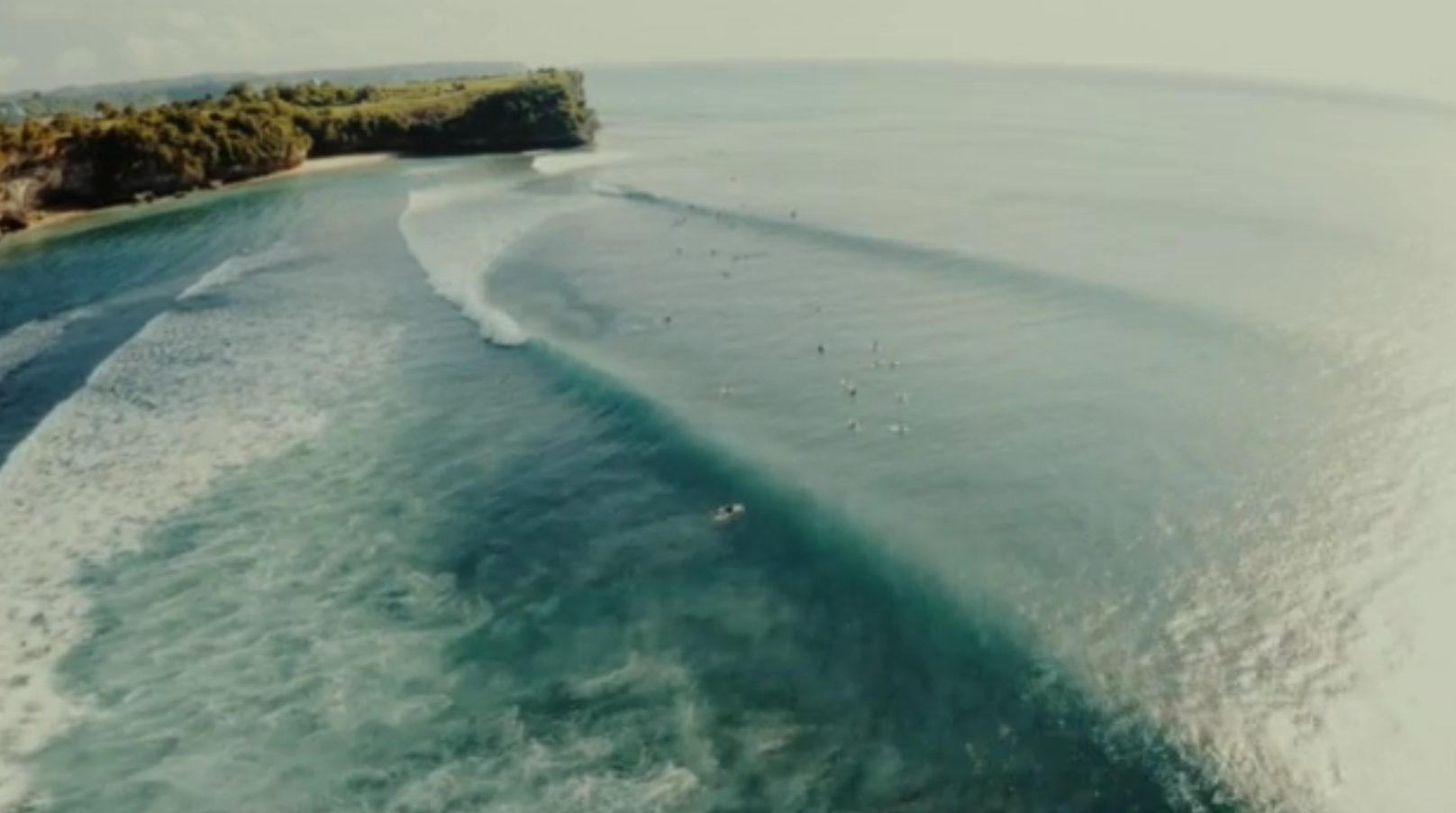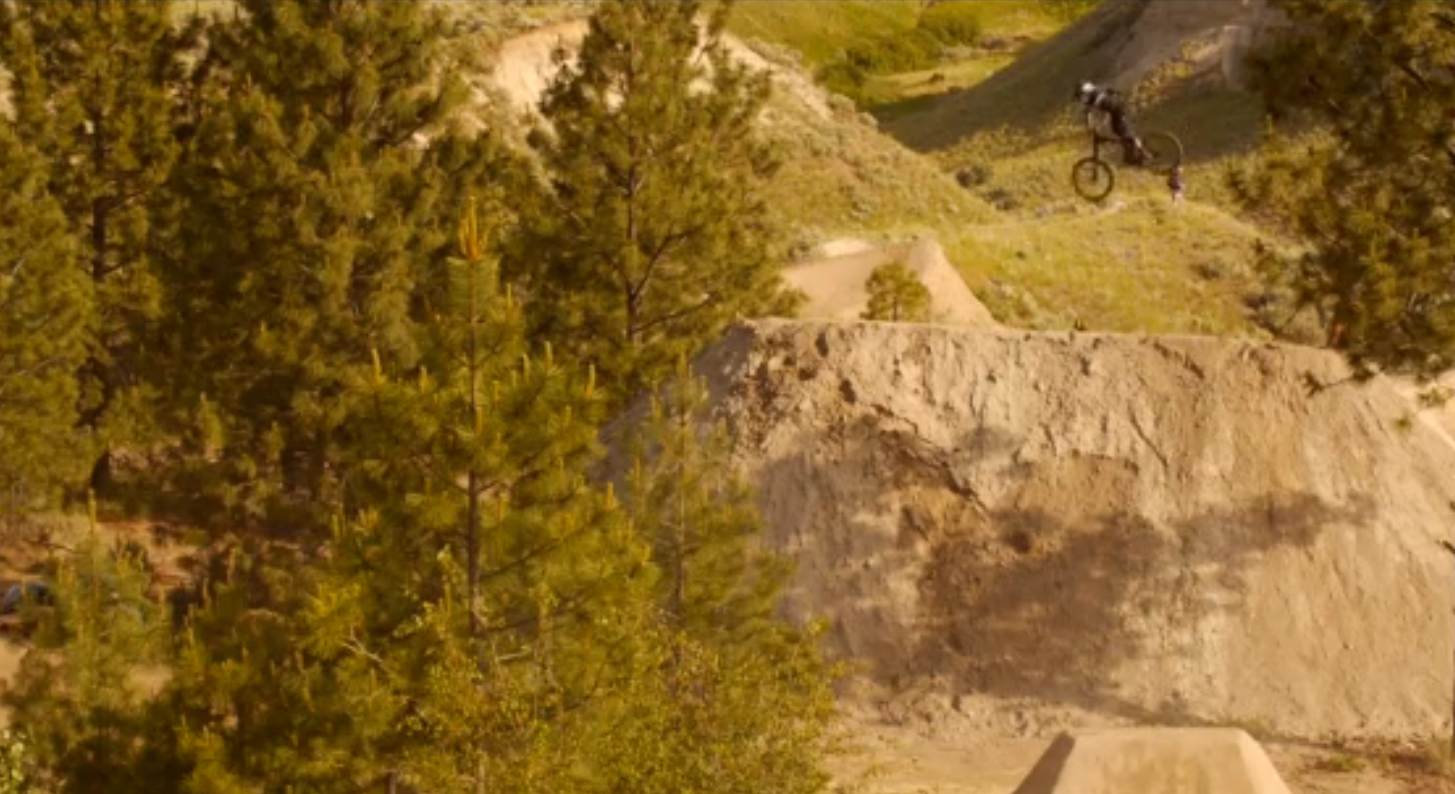[ad3]
The 35mm handle bar standard has been around for a few years now. Lately we have spent some time on a few different versions with our latest bar being from N8tive – a German bicycle components company that sent us one to try. We give a quick run down on the bar and what it has been like our various setups.
From a distance the 800mm bar looks normal despite being about as wide as bars go these days.
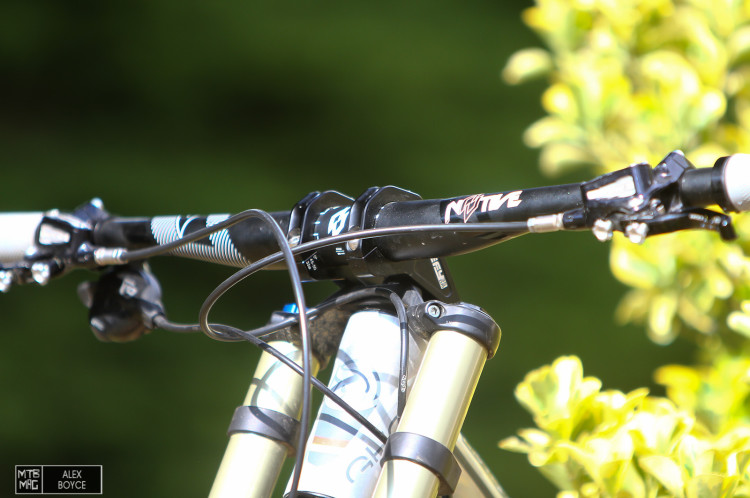
Up close we can see the wide clamp area bulge.
Specifications
Width: 800mm
Clamp size: 35mm
Rise: 10mm / 20mm
Geometry: 5° upsweep, 7° backsweep
Weight
340g / 10mm, 350g / 20mm
Material
7075-T6 aluminum
Color
gunmetal (grey), black, green (team edition)
Why 35mm?
When referring to bar measurements the 35mm refers to the clamp size in the middle of the bar. Most modern bars are 31.8mm. However Easton began a trend shifting towards 35mm a few years ago. The idea was to make the front end of a bike with a wide bar have the same stiffness in the bar compared to a 31.8mm diameter without a weight penalty.
Stiffness can be a very personal point when it comes to riding, do we need a stiffer and lighter bar? Light weight is always a desired feature. Stiffness however depends as it can vary with riding application/rider prefernce. However as the bars have got wider, retaining strength and stiffness becomes more critical.
The clamp area is similar to any other bar clamps – not narrow or excessively wide, just bigger diameter. The amount of material used in the 35mm version is similar to a narrower 31.8mm version at the same width.
On The Trail
We have had a lot of trail time on the 800mm H/Bar in various different situations. We have tried it on a DH bike, and an Enduro bike. On smooth trails and rough trails of Punta Ala, our test centre and at various other locations.
Overall the trail characteristics that could be felt with the 35mm bar were mainly related to front end stiffness. In most situations the bar felt slightly more solid and rigid compared to a normal bar. This is characterized by the fact that there was less give on the front end when it came to rough trail chatter. Vibrations were more pronounced in the hands as the rigidity of the bar fed back to the rider more. This led us to our suspension set-up. We could actually feel how the fork was dealing with trail bumps in a more pronounced way. So we made adjustments that gave us an optimum set up with the 35mm bar option.
Enduro use was essentially where we spent most of our time. The N8tive 35mm H/Bar gave a dependable solid feel in corners and on smooth tracks. When the going was rough the bar felt very solid, we initially got a bit too much feedback, until we spent some time on our suspension adjustment and that improved our ride feel.
The geometry of the bar was ideal for our use. We initially used it at its full width of 800mm and then we cut it down 20mm. Our test rider is fairly big so 800mm for us was great, but on some trails that are narrow it can be more tricky to thread around the branches. That said, we loved the extra control that an 800mm width gives. The extra rigidity can be a benefit when Enduro riding as you feel more connected to the ground as there is less flex and more control, especially if you like to play with the trail. We did though feel that if the trail was too rough the 35mm might not appeal to light riders, as you need slightly more shoulder fatigue resistance when it got rough.
DH use was limited, but we did manage to ride the Val Di Sole track with it and also our DH test track in Punta Ala, plus a variety of other lift assisted trails. On a DH bike the 35mm standard made sense to us. The front end of the bike felt way more connected and sensitive. We ran the bar at the full 800mm width always. The wide bar always left us with a feeling that was dependable up front relative to what we had used before. Fundamentally it felt less vague when compared to the narrow diameter bar we had on previously.
Perspective from out back.
Conclusion
The 35mm standard has been touted to be about improvements in weight in wider bars, increased durability and better stiffness. N8tive have produced a great bar that is good value and performs dependably, matching these elements. We personally like using as wide a bar as possible, 800mm-780mm is ideal for our size.
The increased stiffness we have felt on the front end of our bike with the bigger 35mm diameter 800mm wide bar is a characteristic we like. Deflection in bars as they get wider can be better controlled with a wider diameter clamp. As wheels, forks and stems have become stiffer and bars get wider, matching performance and impact strength has been the main aim without making the bar heavier. Not all riders want this though, so we would caution that a 35mm bar is about riding preference.
If you are a heavier rider or a rider that likes a stiffer front end with a wide (780mm+) bar we think that N8tive have provided an excellent solution that can help tune your ride. With light trail use and easy going riding the 35mm standard might be a bit of overkill, but with Enduro and DH use and the desire to run a wide bar, the H/Bar 800 made sense to us.
N8tive
Test location: Punta Ala
[ad45]


